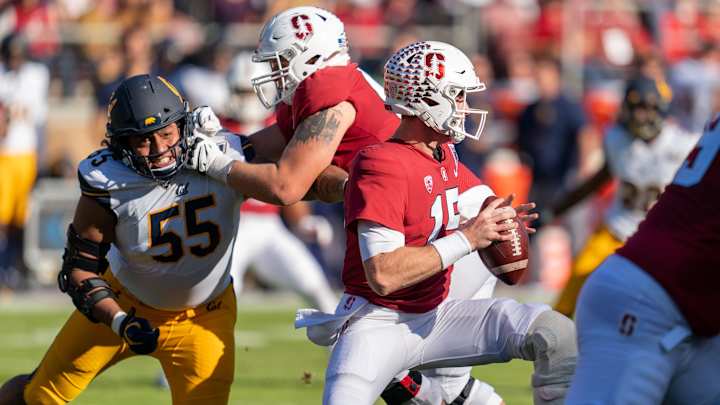Stanford to Cut 11 Sports - Will Cal Consider Doing the Same?

The economic effect of the pandemic on college sports was felt on Wednesday, when Stanford, a school with a $27 billion endowment, announced it will eliminate 11 sports after the 2020-21 school year. That naturally brings up the question of whether Cal will be forced to eliminate sports.
Although Stanford stated in its announcement that financial concerns in its athletic department existed before the pandemic, much of the economic situation in college sports will be determined when the fate of football is decided. If the 2020 college football season is reduced or modified in a way that significantly reduces revenue, many FBS schools will need to find ways to save money. That often means cutting nonrevenue sports.
Cal officials have said in the recent past that they want to avoid cutting any of its 28 sports, and the situations at Stanford (a private institution) and Cal (a public university) are different. But some difficult decisions may need to be made.
Stanford is not waiting.
The 11 Stanford varsity sports programs that will be discontinued at the conclusion of the 2020-21 academic year include men’s and women’s fencing, field hockey, lightweight rowing, men’s rowing, co-ed and women’s sailing, squash, synchronized swimming, men’s volleyball, and wrestling.
These 11 programs have more than 240 student-athletes and 22 coaches. They led to 20 national championships and 27 Olympic medals.
The 11 eliminated sports will have the opportunity to transition to club status after 2020-21.
Also, 20 support staff positions are being eliminated as part of this realignment.
The entire Stanford release can be seen here. But here are a few excerpts, suggesting the pandemic was not the only factor in the decision:
The financial model supporting 36 varsity sports is not sustainable. The average Division I athletics program sponsors 18 varsity sports. In fact, only one university at the Division I FBS level sponsored more varsity sports than Stanford prior to this change, and that institution does so with a significantly larger budget.
Due to the escalating costs of operating such a large athletics department, a structural deficit emerged several years prior to the COVID-19 pandemic. That deficit was projected to exceed $12 million in FY21 and to grow steadily in the years ahead. The COVID-19 pandemic and associated recession have only exacerbated the gap.
Heading into the 2020-21 academic year, Stanford has 36 varsity sports – 20 for women and 16 for men. That is the more than nearly every other college.
Cal sponsors 28 varsity sports – 13 for men and 15 for women – and that is more than most major universities. Oregon, for example, has only 18 varsity sports (seven for men), and Oregon State has 16 varsity sports (seven for men).
In 2010, Cal announced that it would discontinue four sports – baseball, men's rugby, women's lacrosse and women's gymnastics. But all four were saved because of massive fund-raising efforts.
The key may be football, because football revenue pays for many other sports. Pac-12 commissioner Larry Scott said last week the recent rise in COVID-19 cases puts the 2020 football season in jeopardy. The start of the season could be delayed or the Pac-12 might play conference-only games or the season could be pushed back to the spring. A lot of options remain on the table because a lot of uncertainty remains.
Cal is scheduled to open its football season on Aug. 27 at UNLV, with its home opener scheduled for the following Saturday against TCU.
Follow Jake Curtis of Cal Sports Report on Twitter: @jakecurtis53
Find Cal Sports Report on Facebook by searching: @si.calsportsreport
Click the "follow" button in the top right corner to join the conversation on Cal Sports Report on SI. Access and comment on featured stories and start your own conversations and post external links on our community page.

Jake Curtis worked in the San Francisco Chronicle sports department for 27 years, covering virtually every sport, including numerous Final Fours, several college football national championship games, an NBA Finals, world championship boxing matches and a World Cup. He was a Cal beat writer for many of those years, and won awards for his feature stories.